Summer Grilling: Currywurst
- the_maestro

- Jun 30, 2020
- 4 min read
It's getting mighty hot out here in the heartland of late, leading the Maestro to sometimes decide it's not worth stepping out into the humid midwestern sauna only to turn on another heat-producing device and cook on the grill, and instead decide to order Indian takeout. This is why the "Summer Grilling" blog series has been a shade slow.
Yesterday, however, I finally braved the heat (on the most oppressive day of the summer yet, no less) to present the next in our Summer Grilling lineup––currywurst.
As you may know, my sister has been dating a German for just over two years now. I became aware of this particular German culinary delight through his guidance; I've only attempted it once, simply throwing some curry paste into ketchup without doing any proper research into the best, most authentic way to create the sauce. This time, I would do some digging into this little culinary gem and create a delicious German-inspired meal.

Currywurst refers to many variations on German sausage served with a curried ketchup-like sauce, and is among the most popular of street foods in Germany, particularly Berlin. The legend says that a German woman, Herta Heuwer, got some Indian curry powder, ketchup, and Worcestershire sauce from British soldiers stationed in post-WW2 Berlin in 1949, adding it to her sausage condiment and perfecting a curry sauce before going into business selling sausages with her new saucy creation on the street to construction workers rebuilding the city. Business must have been booming, because today currywurst is quite a ubiquitous hit among Germans.

"Wurst" is the German word for sausage, and as you might expect, there are dozens of types of "wurst" you can choose from. Seeking the best wurst and not the worst wurst, I headed to our local food co-op for some high-quality bratwurst made by a small local pig farm. Brats are probably the easiest-to-find German sausage in the U.S., and work quite well for currywurst, though in Germany you can find currywurst made from all manner of different wurst.

Germans, after all, do love their sausages. In fact, they have a whole host of idioms explicitly including sausages, my favorite of which, "Es ist mir alles Wurst," translated directly means "It's all sausage to me," a phrase that essentially means "I don't care," or "It's all the same to me." Another gem is calling someone who is acting snooty or like a prima donna the "extra Wurst." Wunderbar!
The origin and classification of curry itself is a great mystery, but generally refers to dishes made with a particular mix of spices; usually this includes things like cumin, garlic, ginger, turmeric, etc. "Curry" was sort of lumped together by British traders when the dishes made with these spices first made their way west, so in many ways, there's not a lot of agreement or common understanding about what constitutes a "curry" dish. Most currywurst recipes, however, insist on the use of basic curry powder, a blend of the aforementioned spices, so I used this as the seasoning for my currywurst sauce.
Germans are very opinionated about their currywurst recipes, but I settled on a ketchup-based sauce, a decision for which many Germans may applaud me and many may skewer me. Matters not. Herta never shared her recipe, so there's no official one. The key is balancing out all the flavors, like a good BBQ sauce.
I took some minced garlic and onions and cooked in oil for a bit until soft, then added paprika, guajillo chili powder, curry powder, cinnamon, and allspice, stirring them into the onion/garlic mix. Once fragrant, I added ketchup, Worcestershire sauce, chicken broth, honey, Dijon, a dash of apple cider vinegar, bit of salt and pepper, and some cayenne pepper for heat, and let the flavors cook and meld in the pan for about ten minutes before blending it with my handy-dandy immersion blender. Though many say, just like with BBQ sauce, that the ketchup is better if you make it the night before, I slacked and made it right before dinner. Was still delicious.
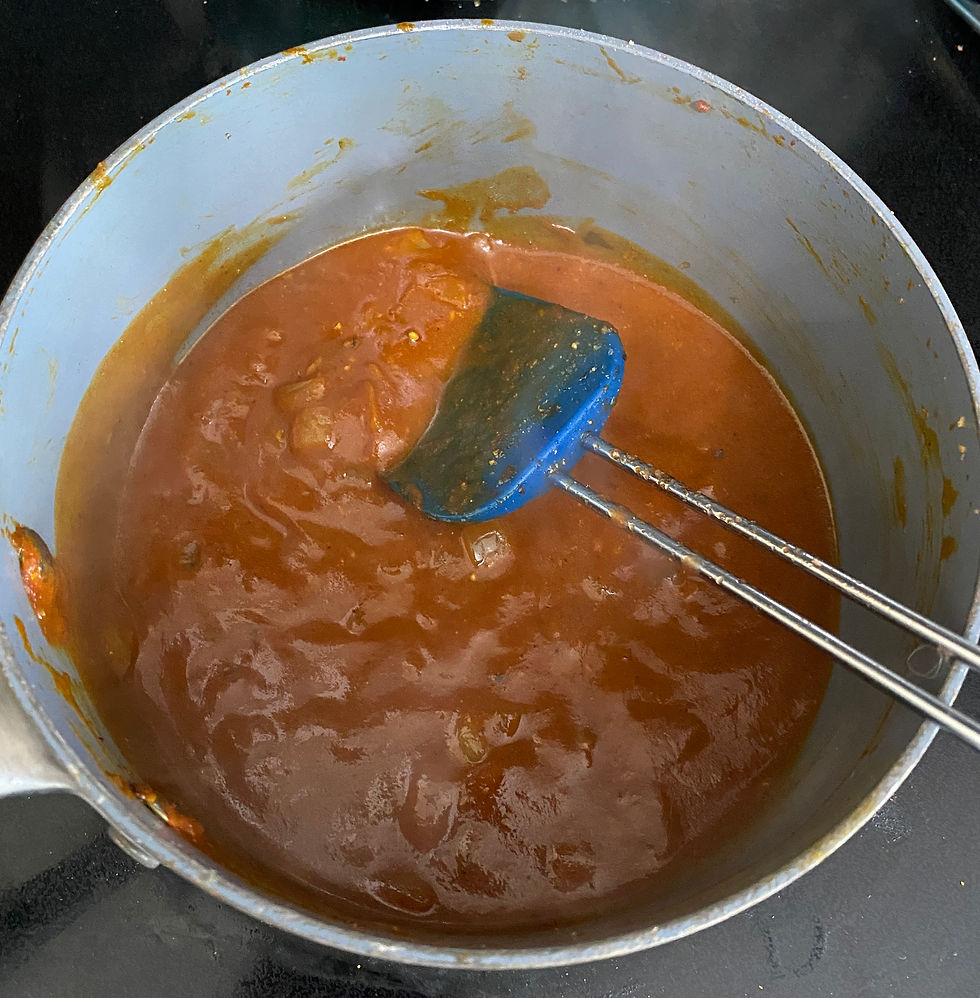
There are a lot of opinions, too, about the best way to cook brats. To my mind, don't puncture them with a fork or make slits––this just lets rendered fat and delicious juices bleed from the sausage. Instead, do a quick parboil in water or beer, simmering the sausages for a few minutes on both sides before finishing off on the grill. You'll want to keep the grill medium-low in heat, at around 325 degrees, and cook to 160 internal temp, although taking that temp likely requires puncturing a brat. Just cook for about 15 to 20 minutes until nice and golden. Too high of heat is a brat's enemy––it will cause the outside to cook far too quickly and char before the inside is cooked through, and can also cause the wurst to burst.
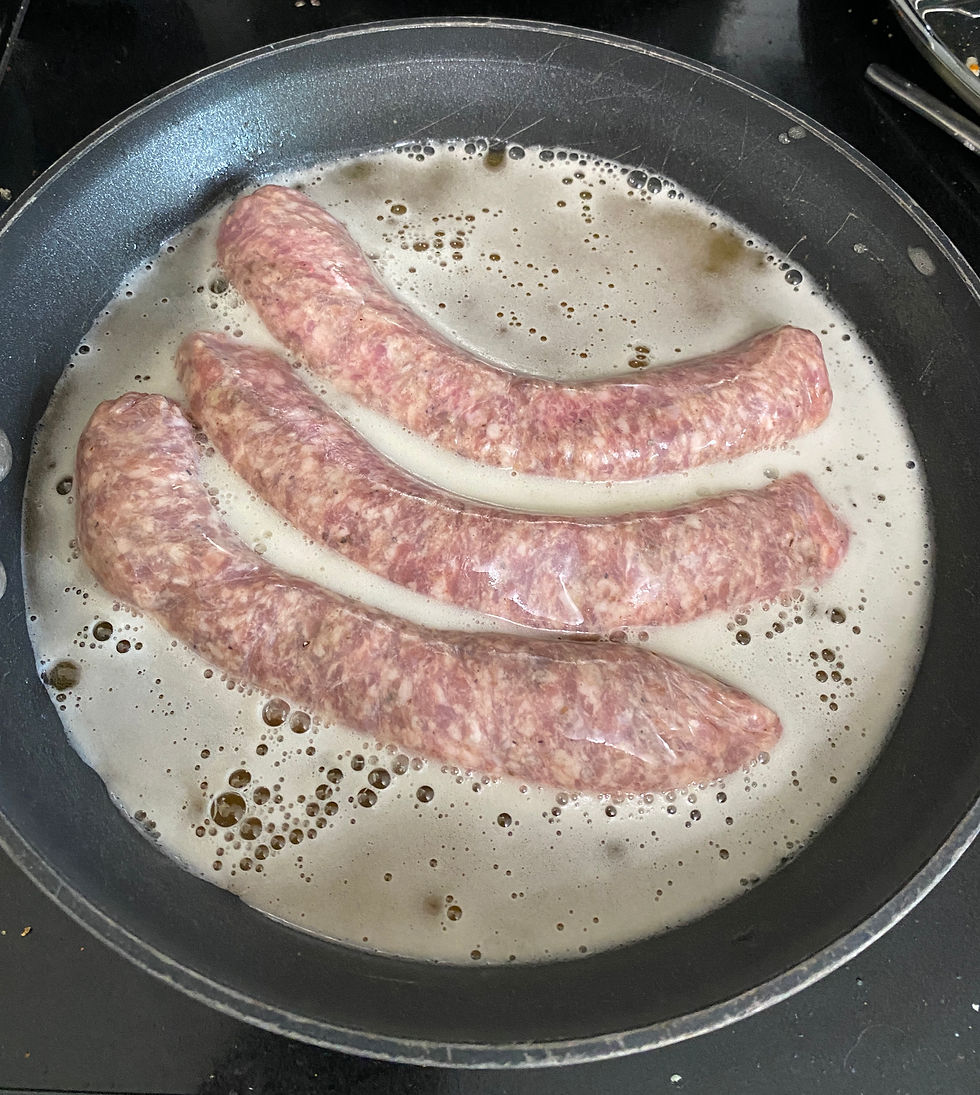
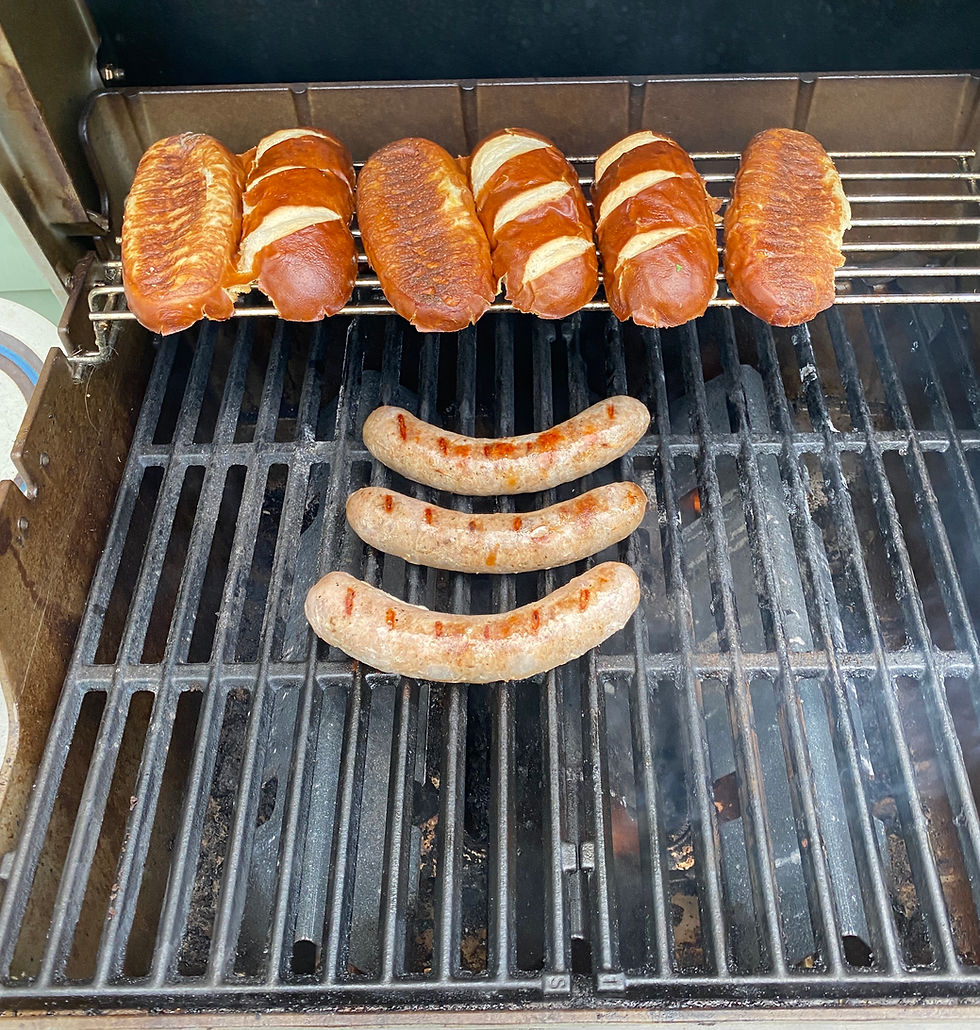
Currywurst is traditionally served with fries, so I made some in the air fryer while cooking the brats. Germans don't usually eat their currywurst in a bun, and instead slice the sausage into pieces, garnishing with the sauce and a light dusting of curry powder. I'd already bought some very delicious-looking and German pretzel buns for sausage, however, so I decided to roll with that (lol) and toast the buns on the grill and serve the brats inside.
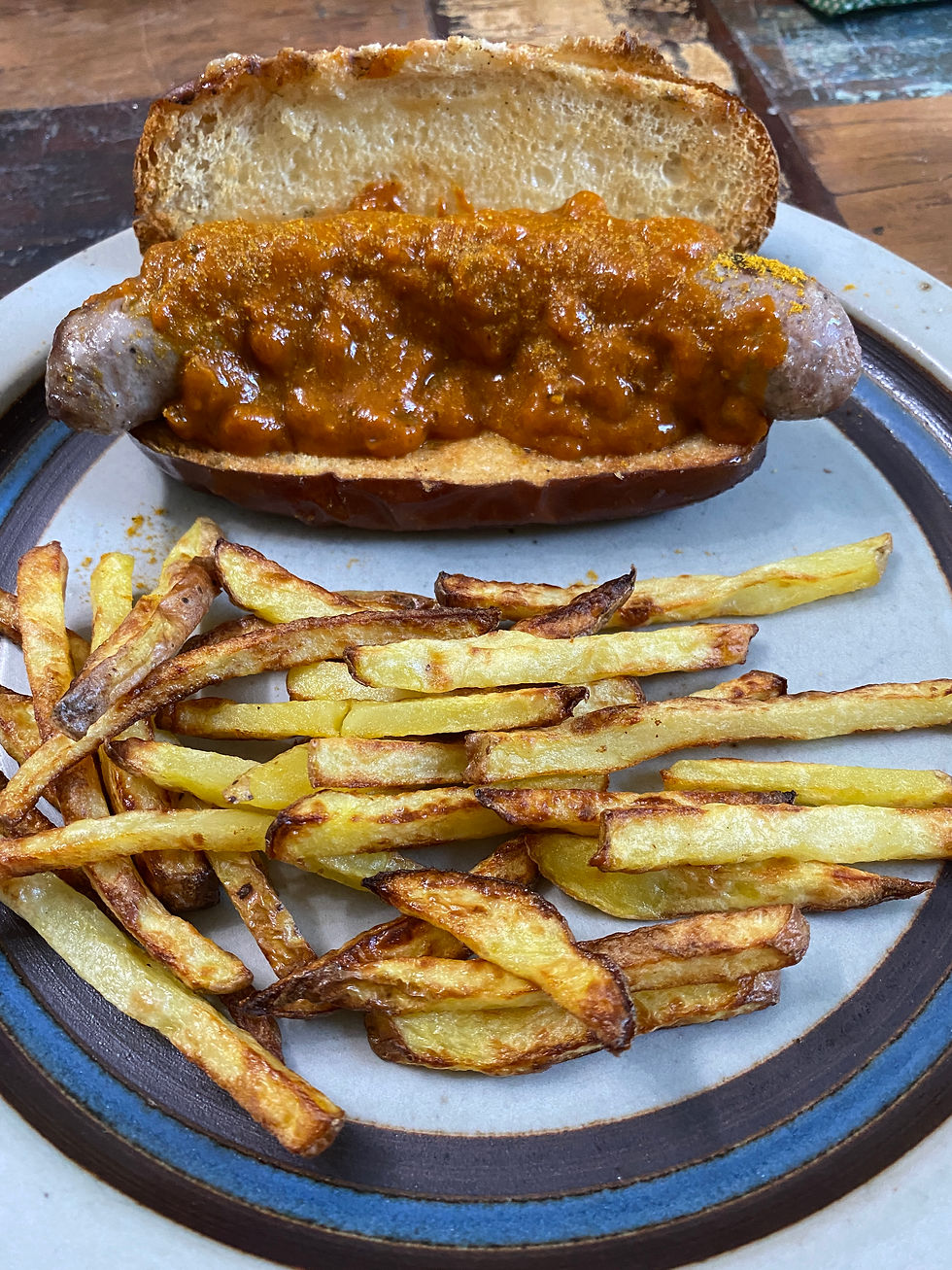
I would say it was a great success for my first real try. The fam was happy as well, although the ketchup was readily spilling forth from the bun, leading me to understand why it's not typically served on the bun itself. No matter; we were all happy.
I settled in with a book after dinner (one of the best things I have ever read, Why Fish Don't Exist; go read it ASAP) as well as the remainder of the beer can used to parboil the brats, and sweet little Sasha made her way up to sleep on my lap.
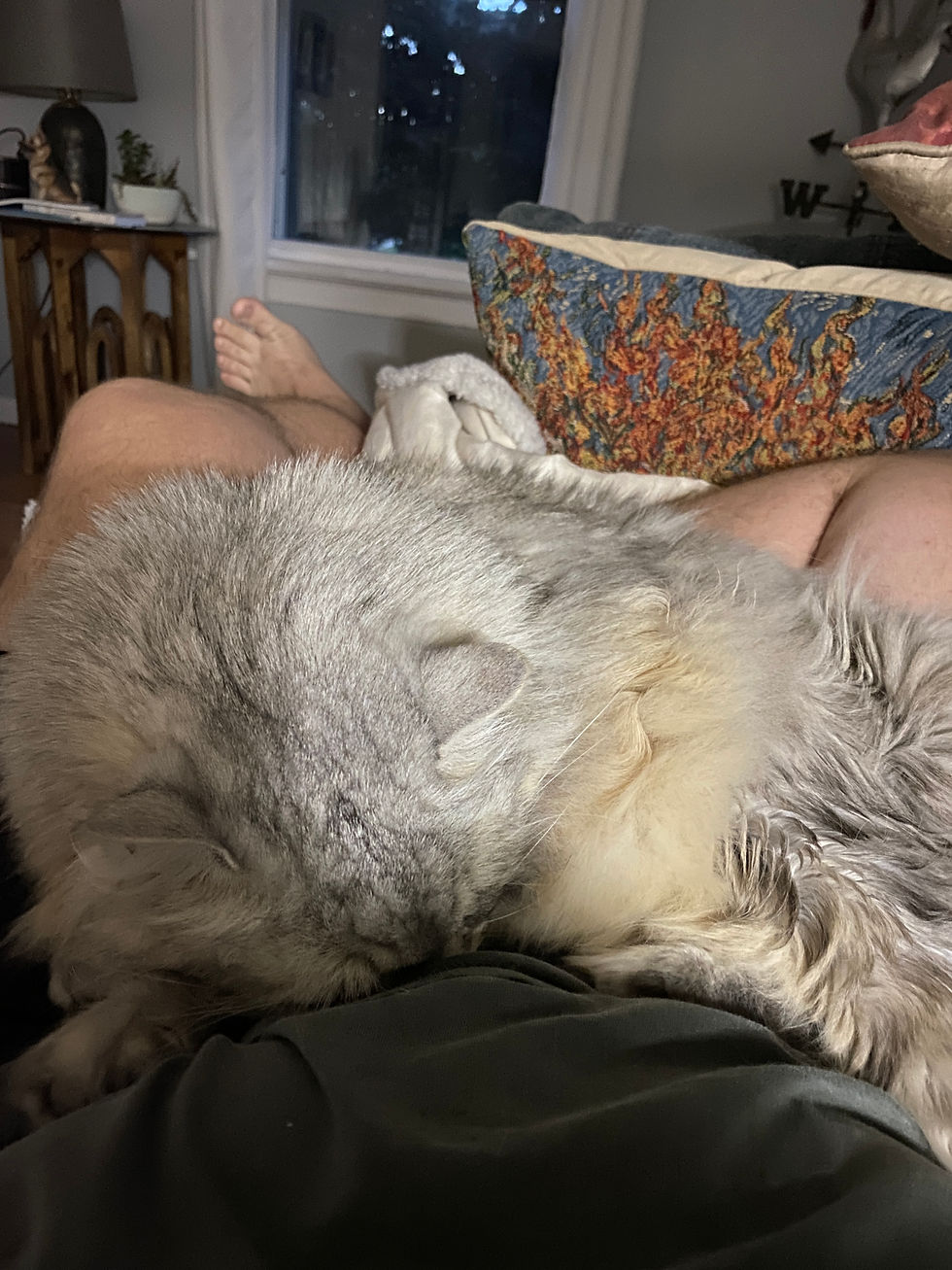
Another #tbt is coming this week, and then I have another installation of the Summer Grilling series. Assuming things stay on track virus-wise in northern California, I'll also be reporting on a highly-anticipated dinner in San Francisco next month.
Until then, keep staying safe, and keep eating wonderful things!


